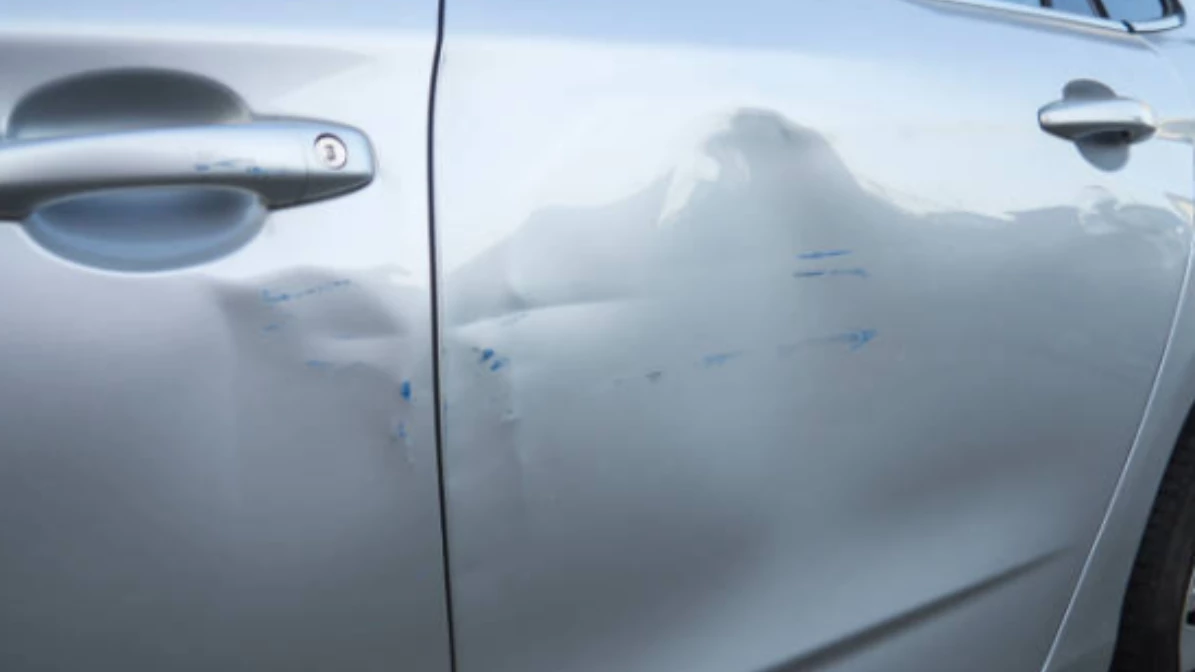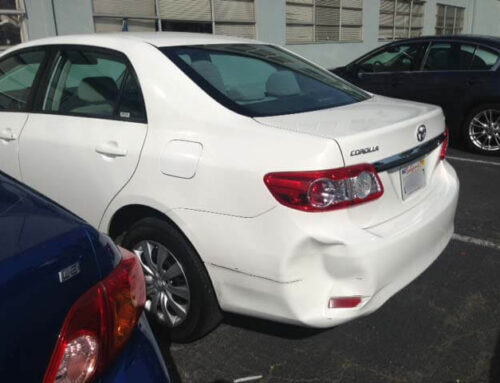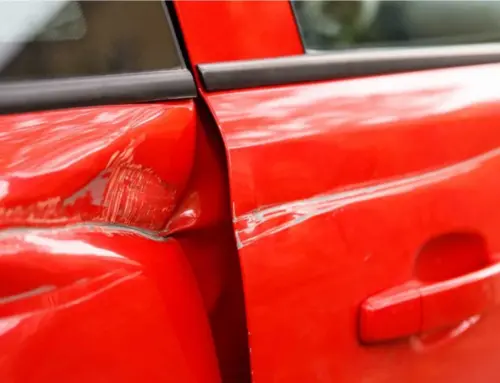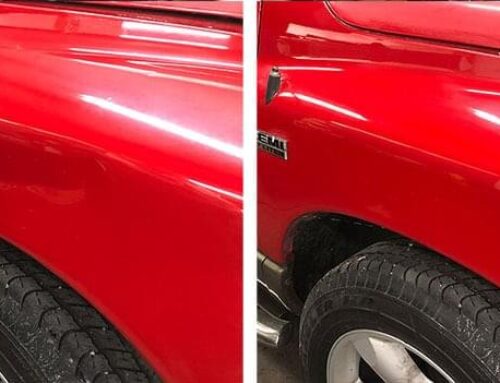You don’t need a traffic report to know what’s going on out there—just look at the dents. From parking lot scrapes to highway fender benders, the damage tells a story. More SUVs on the road? Expect more bumper hits. Tighter urban parking? Hello, door dings.
The kinds of body damage we see every day actually reveal a lot about how—and where—people are driving. At a glance, it might seem like just a dent, but it often points to bigger shifts in road behavior, vehicle design, and city planning.
It’s not just about fixing the damage—it’s about understanding what caused it in the first place. The dents on your car could be showing us patterns we’re all a part of.
What can car body damage indicate about current road conditions?
Car body damage often reveals more than just an accident—it can serve as a reflection of current road conditions, driving habits, and urban planning challenges. Auto repair professionals frequently notice patterns in damage types that align with changes in traffic flow, infrastructure, and environmental stressors. Here’s what certain types of car body damage can indicate:
- Frequent Bumper Dents and Scratches: These often point to congested traffic conditions, tight parking spaces, or distracted driving—especially common in urban areas with limited room to maneuver.
- Side Panel Dents and Mirror Damage: Common in narrow streets, poorly marked lanes, or areas with increased cyclist and pedestrian traffic where space-sharing causes close encounters.
- Underbody Scrapes and Wheel Well Damage: These typically result from potholes, uneven pavement, or deteriorating road surfaces—indicating a lack of infrastructure maintenance.
- Hail and Weather-Related Dents: The rising incidence of climate-related damage, such as hail or falling debris, may indicate more extreme weather patterns in the region.
- Paint Chips and Gravel Marks: These may signal heavy construction zones, loose gravel roads, or poor road surfacing in growing suburban or rural developments.
Your vehicle’s damage can act like a map of the challenges drivers face daily—both environmental and structural.
How does the pattern of vehicle dents reflect traffic trends?
The pattern of vehicle dents can provide surprising insight into shifting traffic trends, offering a visual summary of how driving behavior, road use, and urban design are evolving.
Auto repair specialists often observe recurring types and locations of dents that align closely with broader transportation dynamics. Here’s how these patterns reflect current traffic trends:
- Rear-End Dents: An increase in rear bumper damage often reflects the rise of stop-and-go traffic and distracted driving—especially due to mobile phone use or congestion during peak hours.
- Side Door and Quarter Panel Dents: These dents are common in crowded parking lots and tight urban streets, signaling a surge in vehicle density and limited maneuvering space.
- Mirror and Fender Scrapes: Often caused by narrow lanes or heavy multi-modal traffic (cars, bikes, scooters), these scrapes highlight how cities are repurposing road space for shared use.
- Consistent Right-Side Damage: Frequent right-side impacts may indicate growth in delivery vehicles and curbside congestion in urban centers with high e-commerce activity.
- Increased Minor Dents on Front Bumpers: These indicate more frequent low-speed collisions in slow-moving traffic, likely due to oversaturated roadways and limited visibility at complex intersections.
Vehicle dent patterns serve as a subtle but telling mirror of our changing road environment and traffic behavior.
In what ways does body damage correlate with urban driving behaviors?
Body damage on vehicles often directly reflects the habits and challenges of urban driving. As cities grow more crowded and complex, certain types of car damage have become increasingly common—mirroring how drivers adapt (or struggle) within these fast-paced environments. Here’s how body damage correlates with urban driving behaviors:
- Frequent Bumper-to-Bumper Contact: Rear-end dents and scuffs are often associated with aggressive or distracted driving in congested, stop-and-go traffic.
- Tight Parking Scratches: Scrapes on bumpers and side panels often result from parallel parking in cramped city streets or narrow garages, which are common in densely populated areas.
- Side Mirror Damage: Clipped or broken mirrors are frequently caused by squeezing past other vehicles, cyclists, or roadside obstructions in narrow lanes or shared-use corridors.
- Curb Rash and Wheel Well Scrapes: Urban drivers often cut corners tightly to avoid traffic, leading to contact with curbs, potholes, or poorly maintained road edges.
- Door Dings and Panel Dents: High foot traffic and closely spaced vehicles in parking lots or on busy streets often result in accidental door swings or contact with pedestrians or carts.
These damage patterns offer real-world feedback on how stressful, crowded, and unpredictable urban driving has become—and how those pressures leave their mark on vehicles.
Why is analyzing car damage important for understanding road safety trends?
Analyzing car damage is crucial for understanding road safety trends, as it provides tangible, real-world evidence of how vehicles interact with their environment—and where issues arise.
While crash reports and traffic data offer valuable statistics, patterns in car damage reveal more specific, often overlooked insights about everyday risks drivers face. Here’s why this analysis matters:
- Reveals High-Risk Areas: Frequent types of damage—like bumper dents or side scrapes—can pinpoint locations with poor signage, confusing intersections, or inadequate infrastructure.
- Tracks Changes in Driving Behavior: Increases in certain damage types (e.g., rear-end collisions) may reflect rising distracted driving, aggressive braking, or overly congested roads.
- Identifies Infrastructure Weaknesses: Underbody or wheel well damage often indicates recurring problems, such as potholes or uneven pavement, suggesting maintenance needs that affect public safety.
- Supports Smarter Urban Planning: Understanding how and where vehicles are commonly damaged enables city planners to design safer streets, improved parking, and more driver-friendly layouts.
- Complements Crash Data: Not all damage comes from major accidents—minor dents and scrapes often go unreported but still highlight recurring risks.
Analyzing car damage provides a valuable lens for improving road safety, urban design, and driver awareness, transforming everyday wear and tear into a key area for improvement.
Your Car’s Damage Tells a Bigger Story
Those dents and scratches on your car? They’re not just accidents—they’re clues. At Piedmont Dent Repair, we’ve noticed the patterns: bumper hits from tight commutes, scuffs from tight parking garages, even weather-related damage that’s becoming more common. These signs show us how driving is changing, and they help us fix more than just the surface.
We don’t just make your car look good again—we give you context, so you know what’s behind the damage. Whether it’s one dent or a collection of small hits, we treat it like part of a bigger picture. Because understanding the “why” matters too.






